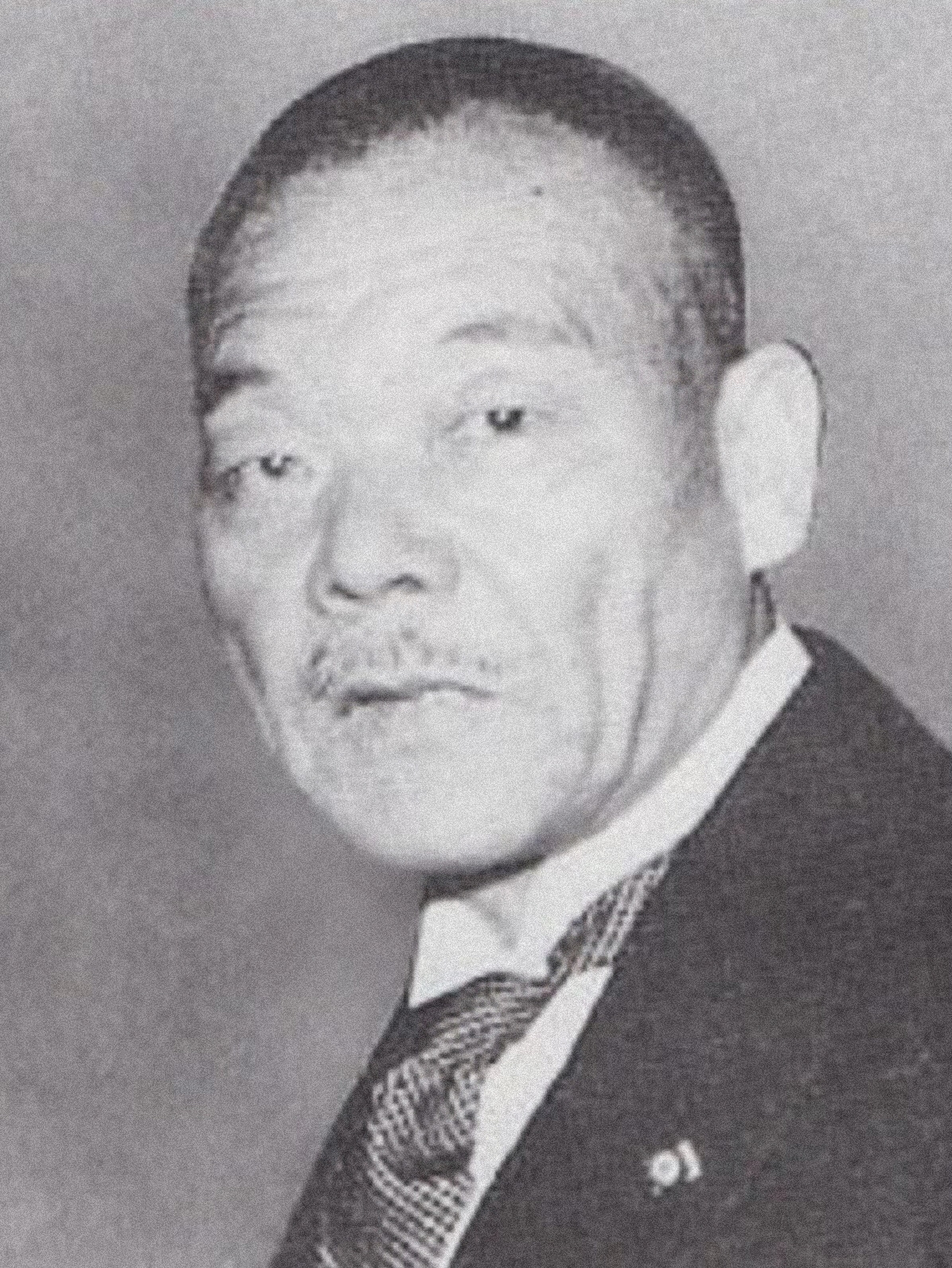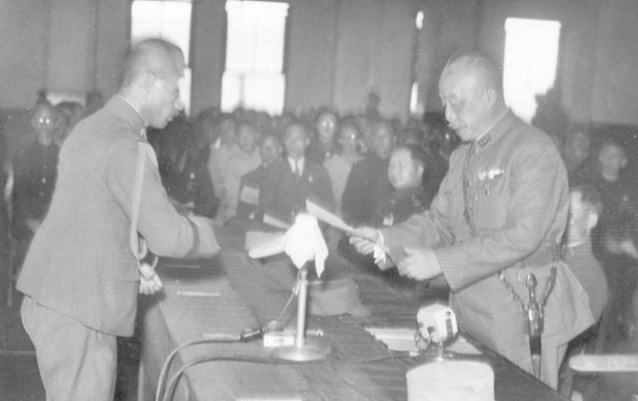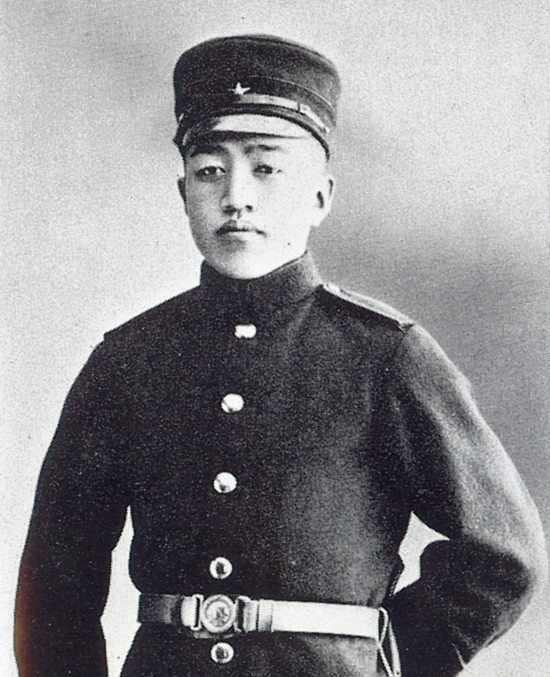|
List Of Graduates In Japanese Imperial Military Academies
This is a select list of graduates from the Japanese Imperial Military Academies (1891–1934). It is not complete. Graduates from the Imperial Japanese Army Academy (Military Academy) 1891 Class * Kazushige Ugaki: 1891 1897 Class *Sadao Araki: November * Jinsaburo Mazaki: November 1904 Class *Tetsuzan Nagata: October 1905 Class *Michitarō Komatsubara 1906 Class * Hiroshi Ōshima 1908 Class *Naruhiko Higashikuni 1912 Class *Torashirō Kawabe: May 1915 Class * Kitsuju Ayabe: May 1921 Class * Akira Mutō: assigned to Military Academy, April 1922 Class *Takushiro Hattori: July 1923 class *Hiromichi Yahara Graduates from the Japanese Army War College The following were notable graduates of the Army War College: 1903 Class *Hisaichi Terauchi: December 1909 Class *Otozō Yamada: December 1910 Class * Toshizō Nishio: graduated from War College, assigned to Military Affairs Bureau, November *Koiso Kuniaki: November * Gen Sugiyama: November *Shunroku Hata: graduated with to ... [...More Info...] [...Related Items...] OR: [Wikipedia] [Google] [Baidu] |
Imperial Japanese Army Academy
The was the principal officer's training school for the Imperial Japanese Army. The programme consisted of a junior course for graduates of local army cadet schools and for those who had completed four years of middle school, and a senior course for officer candidates. History and background Established as the ''Heigakkō'' in 1868 in Kyoto, the officer training school was renamed the Imperial Japanese Army Academy in 1874 and relocated to Ichigaya, Tokyo. After 1898, the Academy came under the supervision of the Army Education Administration. In 1937 the Academy was divided, with the Senior Course Academy being relocated to Sagamihara in Kanagawa prefecture, and the Junior Course School moved to Asaka, Saitama. The 50th graduation ceremony was held in the new Academy buildings in Sagamihara on 20 December 1937, and was attended by the Shōwa Emperor (Emperor Hirohito) himself. In 1938, a separate school was established for military aviation officers. During World War II, the sc ... [...More Info...] [...Related Items...] OR: [Wikipedia] [Google] [Baidu] |
Koiso Kuniaki
was a Japanese general in the Imperial Japanese Army, Governor-General of Korea and Prime Minister of Japan from 1944 to 1945. After Japan's defeat in World War II, he was convicted of war crimes and sentenced to life imprisonment. Early life Koiso was born on March 22, 1880, in Utsunomiya, Tochigi Prefecture, the first son of chief inspector of police and ''shizoku'' (former samurai) Koiso Susumu. He attended eight different schools, graduating from Yamagata Middle School (today Yamagata Prefectural Yamagata East High School). He was accepted as an officer candidate in 1898. Military career Koiso graduated from the Imperial Japanese Army Academy in 1900 and went on to attend the Army Staff College. Commissioned a 2nd Lieutenant in the 30th Infantry Regiment in June 1901, he was promoted to Lieutenant in November 1903. During the Russo-Japanese War, he served as Battalion Adjutant in September 1904, Company Commander in March 1905 and was promoted to captain in June 1905. ... [...More Info...] [...Related Items...] OR: [Wikipedia] [Google] [Baidu] |
Seishirō Itagaki
was a Japanese military officer and politician who served as a general in the Imperial Japanese Army during World War II and War Minister from 1938 to 1939. Itagaki was a main conspirator behind the Mukden Incident and held prestigious chief of staff posts in the Kwantung Army and China Expeditionary Army during the early Second Sino–Japanese War. Itagaki became War Minister but fell from grace after Japanese defeat in the Soviet–Japanese border conflicts, serving as general for several field armies until surrendering Japanese forces in Southeast Asia in 1945. Itagaki was convicted of war crimes by the International Military Tribunal for the Far East and executed in 1948. Early life Seishirō Itagaki was born on 21 January 1885 in Morioka, Iwate Prefecture, into a former ''samurai'' family that had served the Nanbu clan of the Morioka Domain. Itagaki's father, Masanori Itagaki, served as mayor for Kesen District and as a headmaster for a girls school. Itagaki was raised in ... [...More Info...] [...Related Items...] OR: [Wikipedia] [Google] [Baidu] |
Masakazu Kawabe
was a general in the Imperial Japanese Army. He held important commands in the Imperial Japanese Army during the Second Sino-Japanese War, and during World War II in the Burma Campaign and defense of the Japanese homeland late in the war. He was also the elder brother of General Torashirō Kawabe. Biography Early career A native of Toyama prefecture, Kawabe graduated from the 19th class of the Imperial Japanese Army Academy in 1907 and the 27th class of the Army Staff College in 1915. From 1927 to 1929, he served as an instructor at the War College. He was then assigned as a military attaché to Switzerland from 1918 to 1921 and to Berlin, Germany from 1929 to 1932. Promoted to infantry colonel in 1932, he served in a number of staff assignments on his return to Japan, before being assigned command of the IJA 6th Infantry Regiment from 1932 to 1933. Kawabe went on to be Commandant of the Infantry School from 1933 to 1934, and was Chief of 1st Section within the Inspectorate Gen ... [...More Info...] [...Related Items...] OR: [Wikipedia] [Google] [Baidu] |
Hitoshi Imamura
was a Japanese general who served in the Imperial Japanese Army during World War II, and was subsequently convicted of war crimes. Early career A native of Sendai city, Miyagi Prefecture, Imamura's father was a judge. Imamura graduated from the Imperial Japanese Army Academy in 1907 and was commissioned a second lieutenant in the infantry on 26 December of that year. He was promoted to lieutenant in November 1910 and attended the Army War College (Japan) in 1915. He was promoted to captain in 1917, and was sent to England as a military attaché the following year. He was promoted to major in August 1922 and to lieutenant-colonel in August 1926. In April 1927, he was appointed as a military attaché to British India. Promoted to colonel on 1 August 1930, he held staff positions in the Operations Section of the Imperial Japanese Army General Staff from 1931–1932. His younger brother was Imamura Hosaku, an officer in the Kwantung Army who also fought in Chinese Civil War as a ... [...More Info...] [...Related Items...] OR: [Wikipedia] [Google] [Baidu] |
Shōjirō Iida
was a general in the Imperial Japanese Army in World War II. Biography Iida was a native of Yamaguchi prefecture and a graduate of the 20th class of the Imperial Japanese Army Academy in 1908 and the 27th class of the Army Staff College in December 1915. Iida was promoted to captain in December 1918. He participated in the Japanese Expeditionary force for the Siberian Intervention against the forces of the Bolshevik Army, supporting White Russian forces in Russia. After serving in a variety of administrative positions within the Imperial Japanese Army General Staff, including a stint as instructor at the Infantry School from 1932 to 1934, Iida was appointed commander of the 4th Imperial Guards Regiment from 1934 to 1935. He was subsequently Chief of Staff of the IJA 4th Division from 1935 to 1937. With the start of the Second Sino-Japanese War, Iida became Chief of Staff of the Japanese First Army in China in 1938. Iida was promoted to lieutenant general in August 1939. He was ... [...More Info...] [...Related Items...] OR: [Wikipedia] [Google] [Baidu] |
Masaharu Homma
was a lieutenant general in the Imperial Japanese Army during World War II. Homma commanded the Japanese 14th Army, which invaded the Philippines and perpetrated the Bataan Death March. After the war, Homma was convicted of war crimes relating to the actions of troops under his direct command and executed by firing squad on April 3, 1946. Biography Homma was born on Sado Island, in the Sea of Japan off Niigata Prefecture. He graduated in the 14th class of the Imperial Japanese Army Academy in 1907, and in the 27th class of the Army Staff College in 1915. Homma had a deep respect for, and some understanding of, the West, having spent eight years as a military attaché in the United Kingdom. In 1917 he was attached to the East Lancashire Regiment, and in 1918 served with the British Expeditionary Force in France, being awarded the Military Cross. From 1930 to 1932, Homma was again sent as a military attaché to the United Kingdom, where his proficiency in the English language ... [...More Info...] [...Related Items...] OR: [Wikipedia] [Google] [Baidu] |
Hideki Tōjō
Hideki Tojo (, ', December 30, 1884 – December 23, 1948) was a Japanese politician, general of the Imperial Japanese Army (IJA), and convicted war criminal who served as prime minister of Japan and president of the Imperial Rule Assistance Association for most of World War II. He assumed several more positions including chief of staff of the Imperial Army before ultimately being removed from power in July 1944. During his years in power, his leadership was marked by extreme state-perpetrated violence in the name of Japanese ultranationalism, much of which he was personally involved in. Hideki Tojo was born on December 30, 1884, to a relatively low-ranking samurai family in the Kōjimachi district of Tokyo. He began his career in the Army in 1902 and steadily rose through the ranks to become a general by 1934. In March 1937, he was promoted to chief of staff of the Kwantung Army whereby he led military operations against the Chinese in Inner Mongolia and the Chahar-Suiyan ... [...More Info...] [...Related Items...] OR: [Wikipedia] [Google] [Baidu] |
Keisuke Fujie
was a general in the Imperial Japanese Army in World War II. Fujie’s wife was the daughter of Prime Minister Kantarō Suzuki. Biography Fujie was born in Hyōgo prefecture and graduated from the 18th class of the Imperial Japanese Army Academy in 1905, with a specialty in artillery. He went on to graduate from the 26th class of the Army Staff College in 1914. After serving on the Imperial Japanese Army General Staff, Fujie was dispatched as a military attaché to Europe, initially to the Japanese embassy at Paris, France, and later to Bucharest, Romania and Sophia, Bulgaria. After his return to Japan, he served as instructor at the Army Staff College and was appointed commander of the IJA 5th Field Artillery Regiment. Fujie was later on the staff of the IJA 16th Division, and accompanied the Japanese delegation to the Geneva Disarmament Conference. He was promoted to major general in August 1934, was head of the ''Kempetai'' in 1936–1937 under the Kwantung Army, and promo ... [...More Info...] [...Related Items...] OR: [Wikipedia] [Google] [Baidu] |
Rikichi Andō
was a general in the Imperial Japanese Army and 19th and final Japanese Governor-General of Taiwan from 30 December 1944 to October 1945. Biography Early career Andō was a native of Miyagi Prefecture. He served as an instructor at the Army War College from 1924-1925. From 1925-1927, he was sent to British India as a military attaché, and on his return to Japan, served in a number of staff assignments under the Imperial Japanese Army General Staff. He returned to the field in 1928 as commander of the 13th Infantry Regiment, and was promoted to Chief of Staff of the IJA 5th Division in 1930. From 1931-1932, Andō returned to the General Staff, where he was Chief of Military Administration Section, Military Affairs Bureau. He was appointed military attaché to the United Kingdom from 1932-1934. After his return to Japan, he became Commandant of the Toyoma Army Infantry School, and subsequently commander of the 5th Independent Garrison Unit. From 1937-1938, he was Deputy Inspe ... [...More Info...] [...Related Items...] OR: [Wikipedia] [Google] [Baidu] |
Yasuji Okamura
was a general of the Imperial Japanese Army, and commander-in-chief of the China Expeditionary Army from November 1944 to the end of World War II. He was tried but found not guilty of any war crimes by the Shanghai War Crimes Tribunal after the war. As one of the Imperial Japanese Army's top China experts, General Okamura spent his entire military career on the Asian mainland. Biography Early life Born in Tokyo in 1884, Okamura enrolled in Sakamachi Elementary School and graduated eight years later. In 1897, he entered Waseda Junior High School. In 1898, he was transferred to Tokyo Junior Army School, and was transferred to Army Central Junior School later. Okamura entered the 16th class of the Imperial Japanese Army Academy in 1899 and graduated in 1904. His classmates included the future generals Itagaki Seishiro, Kenji Doihara and Ando Rikichi. He was commissioned a second lieutenant in the IJA 1st Infantry Regiment. In 1907, he was promoted to lieutenant and was assigned to ... [...More Info...] [...Related Items...] OR: [Wikipedia] [Google] [Baidu] |
Kenji Doihara
was a Japanese army officer. As a general in the Imperial Japanese Army during World War II, he was instrumental in the Japanese invasion of Manchuria. As a leading intelligence officer, he played a key role to the Japanese machinations that led to the occupation of large parts of China, the destabilization of the country, and the disintegration of the traditional structure of Chinese society to diminish reaction to the Japanese plans by using highly-unconventional methods. He became the mastermind of the Manchurian drug trade and the real boss and sponsor behind every kind of gang and underworld activity in China. After the end of World War II, he was prosecuted for war crimes in the International Military Tribunal for the Far East. He was found guilty, sentenced to death, and hanged in December 1948. Early life and career Kenji Doihara was born in Okayama City, Okayama Prefecture. He attended military preparatory schools as a youth, and graduated from the 16th class of ... [...More Info...] [...Related Items...] OR: [Wikipedia] [Google] [Baidu] |







